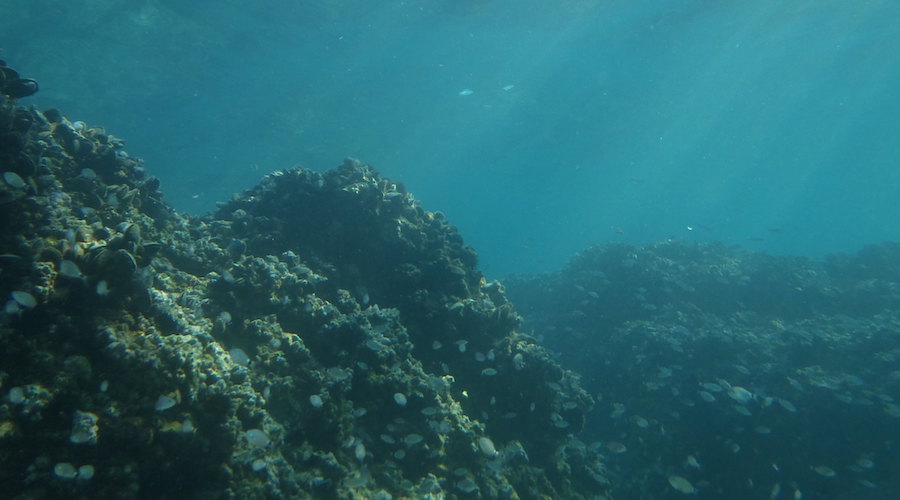Technology companies should slow rush to mine the deep seas

At some point in the next decade, a large, tractor-like device will start crawling the deepest seafloor, gathering potato-sized nuggets packed with metals crucial to electric vehicles, renewable-energy storage and smartphones. Nobody knows how badly this industrialization of the deep sea could damage the marine environment. Even proponents concede that it’ll disrupt and permanently erase habitats that have been barely explored, much less understood.
It’s a bleak scenario and — for now, at least — it’s on a fast track. In July, parties to an international organization chartered to oversee such mining moved closer to their goal of approving regulations by the end of 2020. Environmentalists and scientists have taken part in those discussions. But the companies that will use those minerals in their products — electric-car makers such as Tesla Inc., battery makers such as Panasonic Corp., and consumer-technology companies such as Apple Inc. — have remained silent. If the worst impacts
Deep-sea mining will yield “ethical, clean metals” with “no blasting, drilling, deforestation or impact on people”
The deep ocean, generally defined as waters at depths of 200 meters (656 feet) or more, accounts for 45% of the earth’s surface and 95% of its habitable space. For centuries, humans believed that much of it was barren of life. But in recent decades exploration technology has advanced quickly, enabling scientists to identify approximately 250,000 species in the dark, cold depths. And that’s just start: Researchers estimate there could be as many as 1.75 million more species yet to be discovered, along with 500 million different types of microorganisms.
That biodiversity is threatened by an overweening global demand for metals and minerals. Last year, researchers in Germany warned of global cobalt shortages by 2050, spurred by increasing demand for energy storage in renewable-energy installations and electric vehicles. In May, a Tesla official told a gathering of miners, regulators and lawmakers that the company projects a looming shortage of copper, nickel and lithium — all critical to making batteries and other car parts. Terrestrial resources are increasingly unattractive due to environmental, safety and cost concerns.
The deep ocean would appear to offer an alternative. Current estimates are that just one section of seafloor — the Clarion-Clipperton Zone that stretches from Hawaii to Baja — contains more cobalt, manganese and nickel than all known terrestrial resources, as well as significant deposits of copper and other metals. In June, DeepGreen Metals Inc., a Canadian deep-sea mining startup, secured most of a $150 million package to facilitate feasibility studies in the area. Deep-sea mining, the company claims, will yield “ethical, clean metals” with “no blasting, drilling, deforestation or impact on people.”
That’s one way to look at it. The other is more troubling. DeepGreen aims to dig up trillions of metal-rich rocks known as polymetallic nodules. Formed over tens of millions of years, those rocks now support unique lifeforms and habitats on their surfaces. Once they’re gone, so are those organisms — probably permanently.
In 1989, researchers dragged a plough designed to mimic seafloor mining across a section of the CCZ, then returned over subsequent years to measure how quickly the habitats recovered. More than a quarter century later, during a 2015 survey, they found that “diversity and community composition had not recovered.” Researchers warned that the loss of nodules could cause changes that will last over “geologic timescales” and will impact food chains beyond the deep seafloor.
Remarkably, that research represents the only long-term study ever done on the impact of deep-sea mining. Indeed, according to the U.S. government, over 80% of the seafloor remains “unmapped, unobserved and unexplored.” Proposed regulations being drafted by the International Seabed Authority, the global organization chartered by treaty to both protect and commercialize the seafloor, will require environmental impact statements before mining occurs, as well as careful observation during the mining. But, without long-term baseline studies, those impact statements will be more guesswork than science.
This uncertainty poses serious ethical and reputational problems for the electric-car companies, battery manufacturers and other purveyors of “green” technology that hope to benefit from seafloor mining. How will Tesla’s customers react if the company’s battery supply chain is traced to the extinction of a photogenic species such as the adorable albino octopus, which lays its eggs on polymetallic nodules? Is Apple prepared to risk its hard-won green reputation if reports show its phone batteries have led to the collapse of fisheries dependent upon deep-sea life? It’s worth recalling that a 2015 video of a straw in a turtle’s nose spawned the global movement against disposable plastics that’s now upending decisions at some of the world’s largest petrochemical companies.
Last year the European Parliament called for a moratorium on deep-sea mining until the impact on marine environments, biodiversity and human activities at sea are better understood. It’s a reasonable request that companies should embrace, if only as a means of ensuring that their reputations aren’t damaged later.
Firms could also demand better research, perhaps under the auspices of organizations such as the Responsible Minerals Initiative, a global consortium that helps some of the world’s largest companies source metals and minerals using responsible standards. Only after miners and their customers understand the deep sea can they — collectively — decide what kind of biodiversity loss is worth a battery, windmill or a sleeker smartphone.
(By Adam Minter)
More News
{{ commodity.name }}
{{ post.title }}
{{ post.date }}

Comments